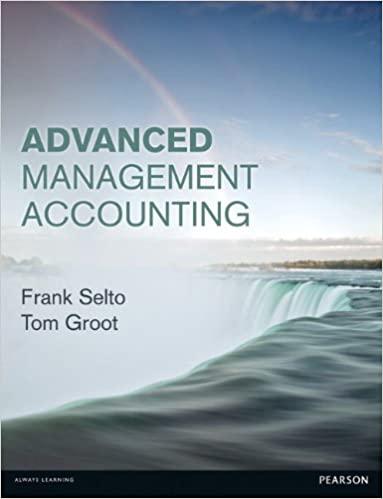Forecast costs, present value analysis, Monte-Carlo analysis: Carbon emission tax Consumption of fossil fuels creates emissions of
Question:
Forecast costs, present value analysis, Monte-Carlo analysis: Carbon emission tax Consumption of fossil fuels creates emissions of carbon dioxide, which is implicated in pollution and global warming. Some advocate a tax on CO2 emissions equal to the ’social cost of carbon’ (SSC) to create incentives to reduce emissions. In theory, a tax equal to the true SSC would result in the economically optimal amount of CO2 emissions. However, there is great controversy regarding the measurement of the SSC, with estimates ranging from $1 per ton of carbon (tC) to $1500/tC. Researchers report a mean value of $43/tC across peer reviewed academic studies. Note: One tC is roughly equivalent to 4 tCO2.
Another dimension of controversy centres on responsibility, equity and ability to pay any carbon taxes that might be levied. For example, emitters in countries that are less developed and emerging economically may be hard pressed to pay significant carbon taxes, which also could stifle normal economic development. Kazakhstan is a former Soviet republic that is seeking to improve its economic position through the production and consumption of fossil fuels.
’Kazakhstan has the second largest oil reserves among the former Soviet republics, after Russia, as well as the second largest oil production. The country also has large reserves of natural gas and steadily increasing production. Full development of its major oilfields could make Kazakhstan one of the world’s top five oil producers in the next decade. . . . .Steadily rising natural gas production is turning Kazakhstan from a net importer to a net exporter in the near term. Natural gas development has lagged behind oil due to the lack of domestic pipeline infrastructure linking the western producing region with the eastern industrial region. Kazakhstan exports most of its produced fossil fuel, but the lack of access to a seaport makes the country dependent on pipelines to transport its hydrocarbons to world markets. Neighbours China and Russia are key economic partners, providing sources of export demand and government project financing. Kazakhstan’s continued growth in oil and natural gas production depends on further development of its resources together with the construction of additional export routes. ’(U.S. Department of Energy)
Consider the available data on Kazakhstan’s production and internal consumption of fossil fuels and CO2 emissions from internal consumption (see the table below - at this writing these are the most complete data available). If Kazakhstan were to levy a carbon tax to encourage reductions of CO2 emissions, how would the country proceed?
Required:
1. Predicting CO2 emissions is quite difficult, particularly for the future (i.e. Niels Bohr). However, be bold and assume that one can extend past trends gleaned from historical data.
Use the tabulated data in statistical analyses (of your design) to predict Kazakhstan’s CO2 emissions for the next 10 years, 2007 - 2016. Build the model using the tabulated data from 1992 - 2005 (plus additional data if you can find it), and test the accuracy of your model with the 2006 and 2007 data.
2. Given the reported mean estimate of $43/tC for the SSC, compute the present value of the social costs of Kazakhstan’s predicted decade of emissions (you will have to choose the proper discount rate or rates). Interpret this amount.
3. Use Monte Carlo analysis to simulate the present value of the SSC of the decade of forecasted emissions. You will have to assume probability distributions for the input variables you wish to randomise. Create a histogram of simulated present values with at least 10 ’bins.’ Interpret this distribution of present values.
4. Kazakhstan uses most of its coal consumption to generate electricity, which also creates 60% of the country’s CO2 emissions. The Kazakhstan central government has been offered an opportunity to co-develop Russian CO2 sequestration technology that reportedly will reduce an electrical power plant’s CO2 emissions by 75%. The technology’s currently estimated cost to remove one million tons of carbon is $150/tC, but the target cost is $50/tC or less. The co-development’s initial cost of $20 million and
$5 million operating cost would be financed by both countries by fossil fuel exports. If Kazakhstan joins the venture as an equal partner, the country could deploy the technology domestically and share royalties equally on the Russian technology adopted by other countries. Kazakhstan can opt to wait one year for the results of a Russian pilot test of the technology that would be financed jointly (50:50) or solely by Russia. The pilot project will be judged to be successful, if the expected average cost per ton of carbon is estimated to be no more than $50/tC at Kazakhstan’s 2006 levels of CO2 emissions, assuming an exponential (e.g. learning curve) rate of cost reduction. If Kazakhstan does not participate in the pilot project, it may purchase the Russian technology but will not share royalties on other countries’ adoptions. Prepare a decision tree of this investment opportunity.
5. What would be the average cost per tC after sequestering 2 million tC that would indicate that the pilot project in part d is successful? What royalty rate per tC would make this an attractive initial investment opportunity for Kazakhstan?

Step by Step Answer:






